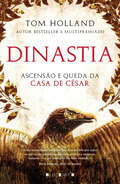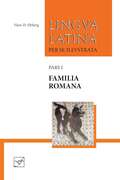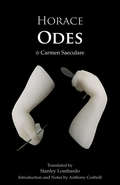Résultats de recherche de titre
Articles 1 à 11 sur 11

Atlântida - As Testemunhas
Par Patrícia Pinto, Walter Parks. 2016
Atlântida - As Testemunhas, por Walter Parks Os documentos antigos, artefactos e as remanescências da Atlântida provam que a Atlântida…
existiu, na realidade. Muitas pessoas acreditavam que a Atlântida era uma ficção criada por Platão. Porem, Platão não foi o primeiro a escrever sobre isso. Encontrámos um documento muito mais antigo, que foi escrito no ano de 9619 A.C., cerca de 9.250 anos antes das escrituras de Platão. Além disso, reunimos provas suficientes, em termos de achados arqueológicos e fatos científicos, que fornecem uma veracidade convincente de que a Atlântida, de fato, existiu e ainda encontrámos as suas remanescências. Estruturamos essas evidências de forma a dar respostas a 3 questões básicas: Como é que a Atlântida foi criada? Será que nos deixou uma evidência, ou um legado? Como foi destruída? Género: História/Antiguidade/Grécia Línguas: Inglesa e Portuguesa (outras traduções em decurso). Contagem de palavra: 46.288 (141 páginas). Informação de vendas: Várias centenas de livros vendidos, sem promoções.
Cleópatra VII: A última governante do Egito (Mulheres legendárias da história mundial #9)
Par Laurel A. Rockefeller. 2019
A emocionante história da rainha mais famosa do Egito! Cleópatra Tea Filópator se recusava a fazer o que lhe era…
ordenado. Em uma período em que o patriarcado negava cidadania completa até mesmo às mulheres da elite romana, Cleópatra governou seu Egito determinada a mantê-lo independente e livre do controle romano — independentemente do preço. Demonizada como uma simples sedutora por Caio Júlio César Otaviano (o futuro César Augusto) e seus aliados políticos, Cleópatra VII provou ser igual aos três homens mais poderosos do mundo romano: Caio Júlio César, Marco Antônio e Otaviano César. Inclui uma linha do tempo detalhada, uma lista de leituras sugeridas/bibliografia e um easter egg especial para os fãs de ficção científica.
Cleópatra VII: Edição do estudante – professor
Par Laurel A. Rockefeller. 2020
A verdadeira e emocionante história da rainha mais famosa do Egito! Agora na versão estudante – professor para estudos fundamentais…
sociais e aulas em casa! Cleópatra Tea Filópator se recusava a fazer o que lhe era ordenado. Em uma período em que o patriarcado negava cidadania completa até mesmo às mulheres da elite romana, Cleópatra governou seu Egito determinada a mantê-lo independente e livre do controle romano — independentemente do preço. Demonizada como uma simples sedutora por Caio Júlio César Otaviano (o futuro César Augusto) e seus aliados políticos, Cleópatra VII provou ser igual aos três homens mais poderosos do mundo romano: Caio Júlio César, Marco Antônio e Otaviano César. Inclui uma linha do tempo detalhada, uma lista de leituras sugeridas/bibliografia e um easter egg especial para os fãs de ficção científica.
Atlântida - As Testemunhas - Parte III: A Destruição da Atlântida
Par Patr cia Pinto, Walter Parks. 2016
Muitas pessoas sempre acreditaram que Platão tinha sido o primeiro autor a escrever sobre a Atlântida, fê-lo no ano 360…
D.C. Contudo, Platão não foi o primeiro a escrever sobre isso; encontrámos um documento muito anterior a essa data, escrito no ano de 9619 A.C, cerca de 9.250 anos anterior às escrituras de Platão. Descobrimos documentos, artefactos e novas evidências científicas que comprovam a existência da Atlântida e que influenciou tudo aquilo que somos hoje e, ainda, encontrámos as suas remanescências. Estruturámos essa evidência de forma a dar resposta às 3 perguntas básicas: como foi criada? Deixou alguma evidência da sua existência, algum legado? Como foi destruída? Este é a parte III da coleção de livros sobre a Atlântida.
Atlântida As Testemunhas - Parte II: O Legado da Atlântida
Par Patr cia Pinto, Walter Parks. 2016
A Atlântida é a base de tudo aquilo que sabemos e tudo aquilo que somos. Descobrimos um relatório sobre a…
Atlântida que foi escrito 9.250 anos antes da época de Platão. Assim, conseguimos fornecer dados sobre as descobertas arqueológicas e fatos científicos que comprovam, de forma convincente, que a Atlântida existiu na realidade. E, ainda, encontrámos as suas remanescências. Apresentamos evidências para a criação; para a destruição e para o legado da Atlântida. Esta é a Parte II - O Legado da Atlântida.
Epistola ad Joannem Millium
Par G. P. Goold, Richard Bentley. 1962
The year 1962 marks the tercentenary of the birth of Richard Bentley (1662-1742), Master of Trinity College, Cambridge, editor of…
Paradise Lost, but principally and justly famous as one of the greatest classical scholars. To mark the event, the University of Toronto Press is issuing a special reprint of Alexander Dyce's edition of the Epistola (1691), the work which first brought Bentley fame, and which has long been out of print.This Latin exercise was called forth by one of those unhappy productions which, mediocre themselves, have had the ill luck to attract the inspection of genius. In the eighth or ninth century A.D., Joannes Malelas of Antioch, a Greek writer, attempted a chronological record of mankind and in it he had recourse to name or quote from classical works no longer extant. English scholars in the seventeenth century prepared a translation of the chronicle into Latin and an accompanying commentary; just before its publication, under the final editorship of John Mill, Bentley was given an opportunity to read proof-sheets and the result was the Epistola, a collection mainly of some twenty-five notes upon statements found in or topics suggested by Malelas. This extraordinary performance by a scholar of 29 moves from one topic to another over a wide range of ancient literature, explaining or correcting some sixty Greek and Latin authors. The notes are not so much a commentary on the old chronicler as a set of dazzling dissertations pegged upon a random set of appalling howlers, and they reveal prodigious information and gift of divination. Bentley's style in Latin is clear and spirited and seasoned with choice of quotation. The Epistola immediately secured for its writer the fame reserved for men of the rarest excellence and this classic among academic productions is still charged with power to instruct and inspire the scholarship of another era.
Caesar's Commentaries (in Latin)
By Julius Caesar.

Cicero's Orations (in Latin)
By Marcus Tullius Cicero.

Dinastia: Ascensão e Queda da Casa de César
Par Tom Holland. 2015
O retrato da família que transformou o Império Romano para sempre. Primeiro governada por reis, Roma tornar-se-ia uma república. Mas…
no fim, após conquistar o mundo, a república desmoronou-se. Roma afogou-se em sangue. As guerras civis foram tão terríveis, que o povo romano acolheu de bom grado o governo de um autocrata que lhes poderia dar a paz. «Augusto», o seu novo senhor, intitulava-se «O Divino Favorito». O fantástico esplendor da dinastia fundada por Augusto nunca esmoreceu. Nenhuma outra família se compara em fascínio com a sua galeria de personagens: Tibério, o grande general que acabou os seus dias como um recluso amargurado, célebre pelas suas perversões; Calígula, o mestre da crueldade e humilhação; Agripina, a mãe de Nero, cujas manobras levaram o filho ao poder, e que acabaria por morrer por ordem dele; Nero, que pontapeou a mulher grávida até à morte, que se casou com um eunuco, e que ergueu um palácio de prazer no centro dos escombros de uma Roma destruída pelo fogo.
Familia Romana (Lingua Latina #Book One)
Par Hans H. Ørberg. 2011
Hans Ørberg's Lingua Latina per se Illustrata is the world's premiere series for learning Latin via the Natural Method. The…
Natural Method encourages students to learn Latin without resorting to translation, but instead by teaching them to think in the language: students first learn grammar and vocabulary inductively through extended contextual reading and an ingenious system of marginal notes. Lingua Latina per se Illustrata is also the most popular series for those teachers at both the secondary and collegiate levels who wish to develop Latin conversational skills in the classroom. Familia Romana (the main book of Pars I of the Lingua Latina per se illustrata series) contains thirty-five chapters and describes the life of a Roman family in the 2nd century A.D. It culminates in readings from classical poets and Donatus's Ars Grammatica, the standard Latin school text for a millennium. Each chapter is divided into two or three lessons (lectiones) of a few pages each followed by a grammar section (Grammatica Latina) and three exercises (Pensa). Hans Ørberg's impeccable Latin, humorous stories, and the Peer Lauritzen illustrations, reproduced in full color, make this work a classic. The book also includes a table of declensions, a Roman calendar, and a word index (index vocabulorum). The Lingua Latina series incorporates the following features: The most comprehensive treatment of Latin grammar available in an elementary textbook. A vocabulary of almost 1,800 words, reinforced by constant and creatively phrased repetition, vastly expands the potential for later sight reading. A complete line of ancillary volumes, exercises, and readers both in print and online.
Odes: With Carmen Saeculare
Par Horace. 2018
Horace's Odes enjoys a long tradition of translation into English, most famously in versions that seek to replicate the quantitative…
rhythms of the Latin verse in rhymed quatrains. Stanley Lombardo, one of our preeminent translators of classical literature, now gives us a Horace for our own day that focuses on the dynamics, sense, and tone of the Odes, while still respecting its architectonic qualities.In addition to notes on each of the odes, Anthony Corbeill offers an Introduction that sketches the poet's tumultuous political and literary careers, highlights the Odes' intricate construction and thematic breadth, and identifies some qualities of this work that shed light on a disputed question in its reception: Are these poems or lyrics?This dual-language edition will prove a boon to students of classical civilization, Roman literature, and lovers of one of the great masters of Latin verse. The Amazon Kindle and other flowing-text eBook editions include the text of the Latin originals at the end of the book and the line numbers are enclosed in square brackets and embedded at the end of lines.